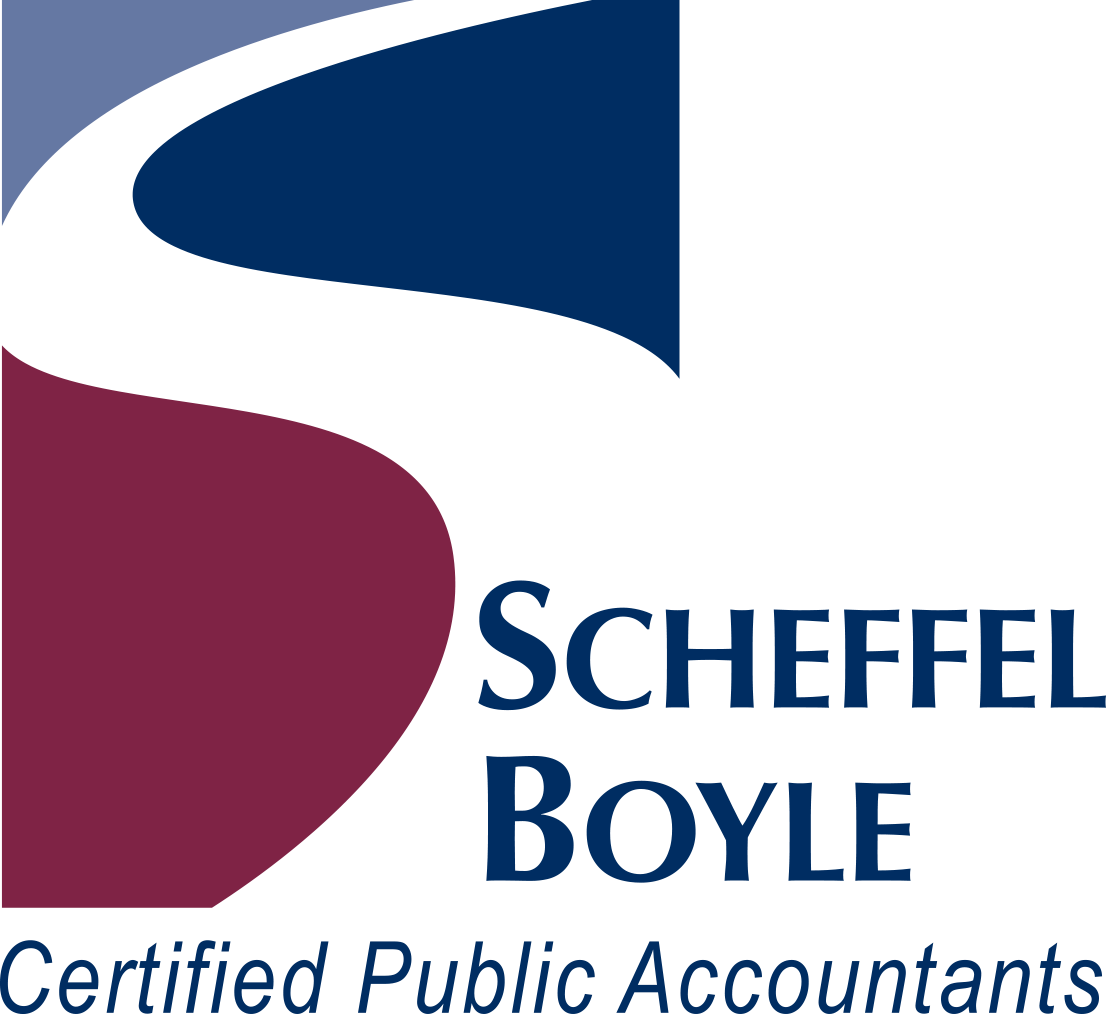The SECURE Act and What it Could Mean For You
On December 20, 2019, President Trump signed the SECURE Act into law, which makes changes to certain retirement plans. The SECURE Act has received a lot of publicity due to the provisions affecting inherited individual retirement accounts (IRAs). However, that’s not the only notable change of interest to individuals.
Modification of Required Minimum Distribution (RMD) Rules for Beneficiaries of Inherited IRAs or Qualified Plans
Upon the death of a traditional IRA owner or qualified plan participant, RMDs could be paid over the life expectancy of the designated individual beneficiary. Often referred to as a “stretch payment,” payment of RMDs over the life expectancy of a much younger beneficiary (such as a taxpayer’s child or grandchild), resulted in smaller annual distributions, thereby providing the opportunity for the continued deferral of tax on the retirement account assets while they continued to appreciate.
Prior to the SECURE Act, if a traditional IRA owner or qualified plan participant died without naming an individual as a designated beneficiary and the IRA owner or qualified plan participant had not yet reached the required beginning date, the taxpayer’s remaining interest in the retirement plan was required to be distributed no later than the end of the fifth calendar year following the death of the taxpayer (the five-year rule).
The SECURE Act does away with the favorable tax deferral of stretch payments. Instead, non-spouse beneficiaries of traditional IRAs or qualified plans of taxpayers who die after December 31, 2019, must now deplete the plan’s assets on or before the end of the 10th calendar year following the death of the taxpayer. Further, this 10-year rule also applies to plans that previously would have been subject to the aforementioned five-year rule.
Eligible designated beneficiaries are not subject to the new 10-year rule. Eligible designated beneficiaries include the surviving spouse, minor children, certain chronically ill or disabled beneficiaries, and individual beneficiaries who are not more than 10 years younger than the deceased IRA owner or qualified plan participant. Eligible designated beneficiaries may continue to receive RMDs over their life expectancy, provided however, that the account balance must be distributed within 10 years of the death of the eligible designated beneficiary or, in the case of an eligible beneficiary who was a minor child, within 10 years of such child reaching the age of majority.
Insights
- The age of majority varies across the states. There is currently no regulatory guidance from the IRS on the age of majority for purposes of applying this provision of the SECURE Act.
- Taxpayers may want to review the named designated beneficiaries of their IRAs and retirement plans. Where this change in the SECURE Act may now produce an unintended result, taxpayers may want to revisit their estate plans and consider alternative planning opportunities such as taking advantage of the Tax Cuts and Jobs Act (TCJA) lower income tax rates and converting traditional IRAs to Roth IRAs, which generally are not subject to the RMD requirements during the IRA owner’s lifetime. Inherited Roth IRAs are subject to RMD requirements.
- The House Ways and Means Committee estimates that this change will raise $15.7 billion of the total estimated $16.3 billion the SECURE Act is expected to generate over the next 10 years.
RMD Age Increased to Age 72
Prior to the SECURE Act, taxpayers were generally required to begin receiving RMDs from their traditional IRAs and certain qualified retirement plans beginning on April 1 of the year following the year they reached age 70 ½. *The SECURE Act increased this RMD age to age 72 for all distributions required to be made after December 31, 2019. That is, individuals who attain age 70 ½ after December 31, 2019, will not be required to take mandatory distributions until April 1 of the year following the year in which they attain age 72.
*Taxpayers may defer withdrawals from a qualified plan until retirement from the company sponsoring the plan, provided the taxpayer is not a 5% or greater owner of the company.
Insights
- Generally, there is no RMD requirement for a Roth IRA during the Roth IRA owner’s lifetime. Unlike contributions to a traditional IRA which are made with pre-tax dollars, contributions to a Roth IRA are made with after-tax dollars. As such, the RMD requirement of traditional IRAs ensure that a taxpayer may not indefinitely defer tax on assets held in a traditional IRA.
- The House Ways and Means Committee estimates that this change will cost $8.9 billion over the next 10 years. That’s more than half of the nearly $16.3 billion total the SECURE Act is estimated to cost over the next 10 years.
Penalty-Free Withdrawals From Certain Retirement Plans for Expenses Related to Child Birth or Adoption
Distributions from traditional IRAs and qualified retirement plans are generally included in income in the year received. With rare exception, distributions before age 59 ½ are subject to a 10-percent early withdrawal penalty on the amount includable in income. A common exception to the early withdrawal penalty is for distributions made in certain cases of emergency or financial hardship.
The SECURE Act provides an additional exception to the 10-percent early withdrawal penalty for a distribution of up to $5,000 from a defined contribution retirement plan or IRA made after December 31, 2019 which is used for expenses related to a qualified birth or adoption. To qualify for the penalty-free exception, the distribution must be made during the one-year period beginning on the date on which the child is born, or the adoption is finalized. Eligible adoptees are any individual (other than a child of the taxpayer’s spouse) who has not attained age 18 or is physically or mentally incapable of self-support. Qualified birth or adoption distributions may generally be repaid to the retirement plan at any time.
Insights
- Amounts withdrawn for qualified birth or adoption expenses are included in the taxpayer’s income in the year withdrawn, but they are not subject to the 10 percent early withdrawal penalty or to mandatory 20 percent income tax withholding (because the new law says that they are not “eligible rollover distributions”). Qualified birth or adoption distributions generally can be repaid with after-tax dollars at any time, essentially allowing retirement plan participants to restore the full amount of the distribution to their plan accounts. So, if a participant withdrew $5,000 as a qualified birth or adoption expense, he or she could recontribute the full $5,000 back into the plan (even years later), even though the participant paid income tax on the distribution.
- The $5,000 limit is per individual. Thus, a married couple may each separately receive a $5,000 qualified birth or adoption distribution from an eligible retirement plan.
- The individual receiving the qualified birth or adoption distribution appears to be the only person who can repay it to the retirement plan or IRA. Thus, someone else could not directly repay the amount as a gift, but they could gift the funds to that individual, enabling him or her to repay the distribution.
Repeal of Maximum Age for Traditional IRA Contributions and Coordination with Qualified Charitable Distributions (QCDs)
Prior to the enactment of the SECURE Act, beneficiaries were required to be under age 70 ½ as of the end of the taxable year to be eligible for a deduction for qualified contributions to traditional IRA accounts. The SECURE Act repealed this maximum age limitation for taxable years beginning after December 31, 2019, ensuring that taxpayers of any age are now eligible to make qualified contributions to traditional IRA accounts and obtain a deduction for their qualified contributions.
Insights
- The House Ways and Means Committee Report acknowledged that Americans are continuing to work past traditional retirement ages and explained that the elimination of the age limitation removed an impediment for older American workers to add to their retirement savings.
- Roth IRAs have no such age limitation and therefore are unaffected by this provision of the SECURE Act. In 2020, contributions to all of taxpayer’s IRAs (traditional and Roth), may not exceed $6,000. Individuals age 50 or older are able to contribute an additional $1,000.
QCDs permit taxpayers to make a charitable contribution up to $100,000 from their traditional IRA and exclude that distribution from the taxpayer’s gross income. For taxable years beginning after December 31, 2019, QCDs that are excluded from a taxpayer’s gross income are reduced (but not below zero) by the excess of: (1) the total amount of deductions allowed to the taxpayer for contributions to a traditional IRA in taxable years ending on or after the date the taxpayer attains age 70 ½ over (2) the total amount of reductions for all tax years preceding the current tax year.
Insights
- This change to QCDs prevents a taxpayer over age 70 ½ from usurping the traditional charitable contribution limitations by taking a deduction for a qualified contribution to a traditional IRA and then making a QCD and excluding the QCD from gross income.
Reinstatement of the Kiddie Tax Previously Suspended by the TCJA
Before the TCJA was enacted, for taxable years beginning before December 31, 2017, the net unearned income of a child was taxed at the parents’ tax rates if the parents’ rates were higher than the child’s. The TCJA suspended this so-called “kiddie tax” for taxable years beginning after December 31, 2017, and before January 1, 2026, and instead provided that the net unearned income of a child was taxed at the same rates as estates and trusts.
The SECURE Act reinstates the kiddie tax. As a result, for tax years beginning after December 31, 2019, the unearned income of a child is no longer taxed at the same rates as estates and trusts. Instead, the unearned income of a child will be taxed at the parents’ tax rates if such rates are higher than the child’s tax rates.
Insights
- Taxpayers can elect to apply this provision retroactively to tax years that begin in 2018 or 2019. Taxpayers should revisit their 2018 filings and determine whether an amended return would be beneficial.



